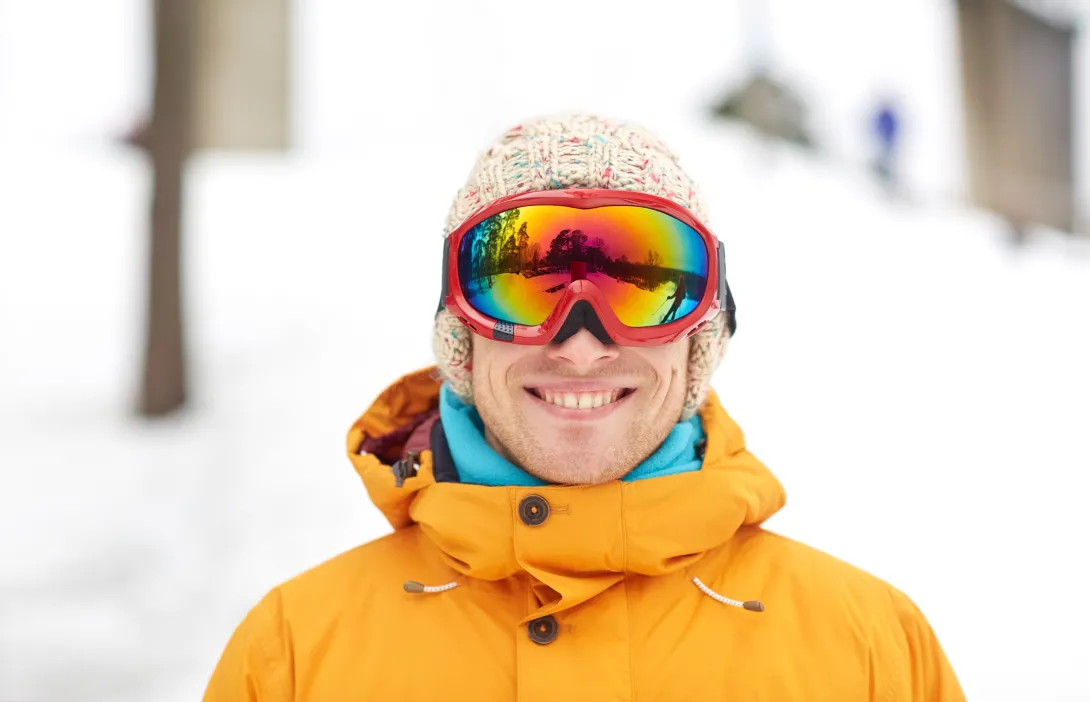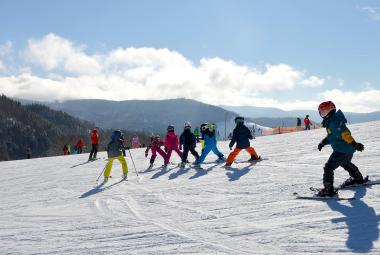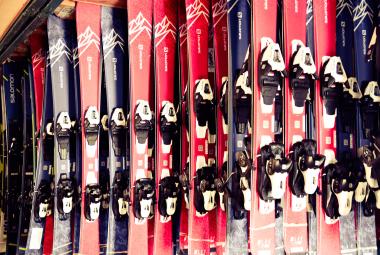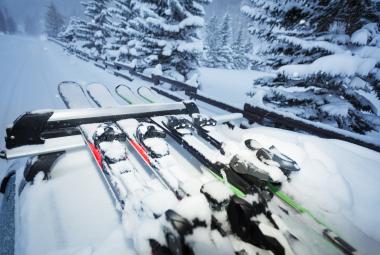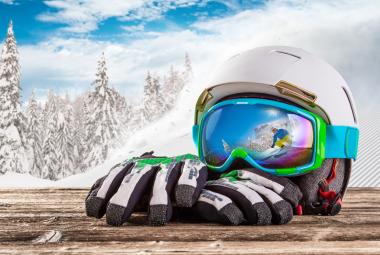Even the best ski goggle lens would be completely useless if it weren’t made for the present conditions. There’s nothing more annoying than not being able to see on cloudy days because your ski goggle lenses are too dark or being blinded on sunny days because your lenses are too light. So what kind of ski goggle lenses are best for you?
Keep reading to learn everything you need to know about how to choose the right ski goggle lenses, from color to lens technology.
Types of Ski Goggle Lenses
Single Lens vs Interchangeable Lenses
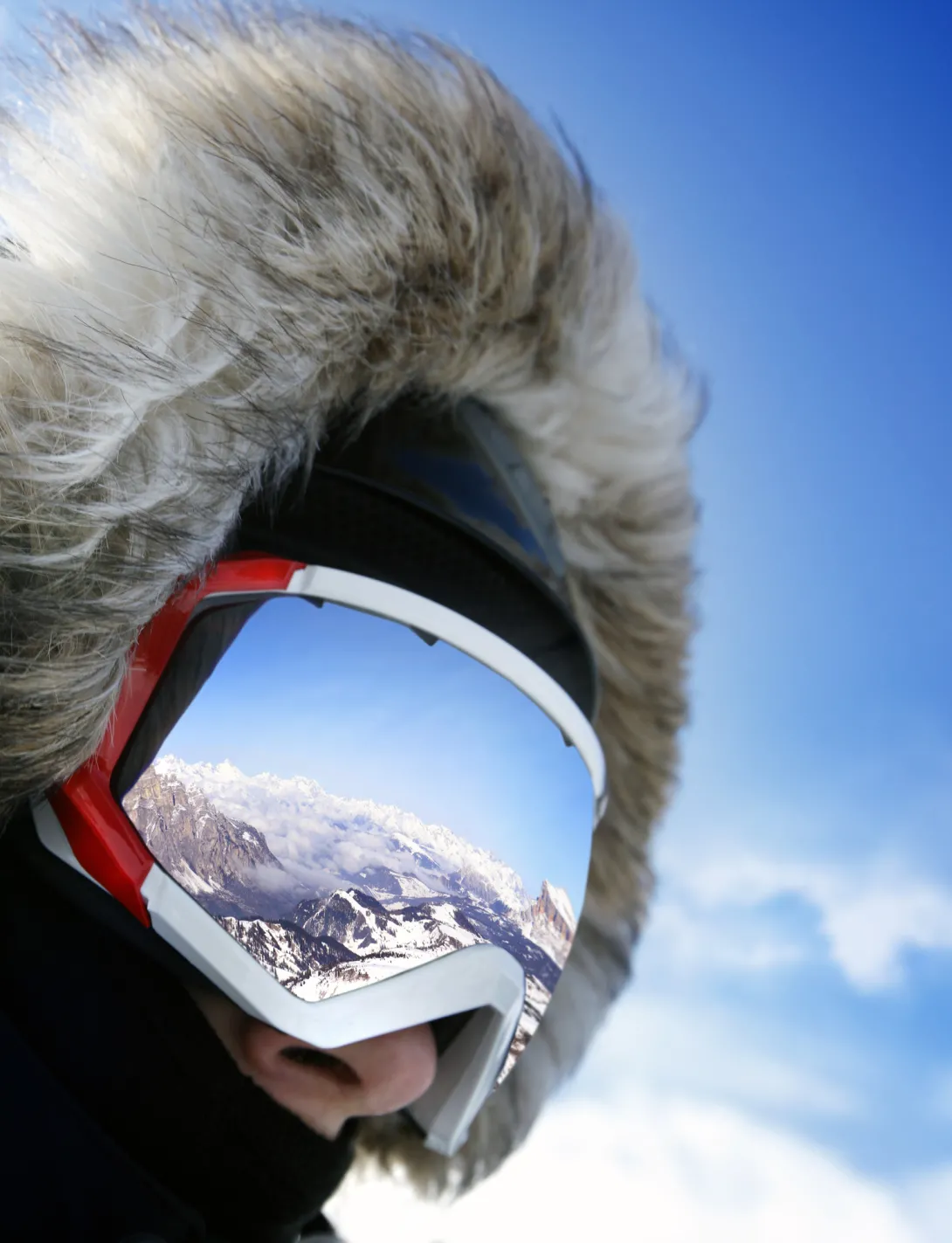
If your ski goggles have a single lens, you’ll need to choose a color that is best suited for the environment that you normally ski in. If you have a pair of ski goggles with interchangeable lenses then you have the option of being able to switch out your lenses when conditions change.
The pro to having interchangeable lenses is being able to pick the perfect lens for that moment.
The con is that you have to carry extra lenses on you. Also, just because a pair of ski goggles has interchangeable lenses, that doesn’t mean it’s always a quick and easy process to do so.
I’d probably always recommend getting ski goggles with interchangeable lenses just because you never know when you’ll want another lens and it’ll be much cheaper to get a new lens than a whole new pair of goggles.
Photochromatic Lenses
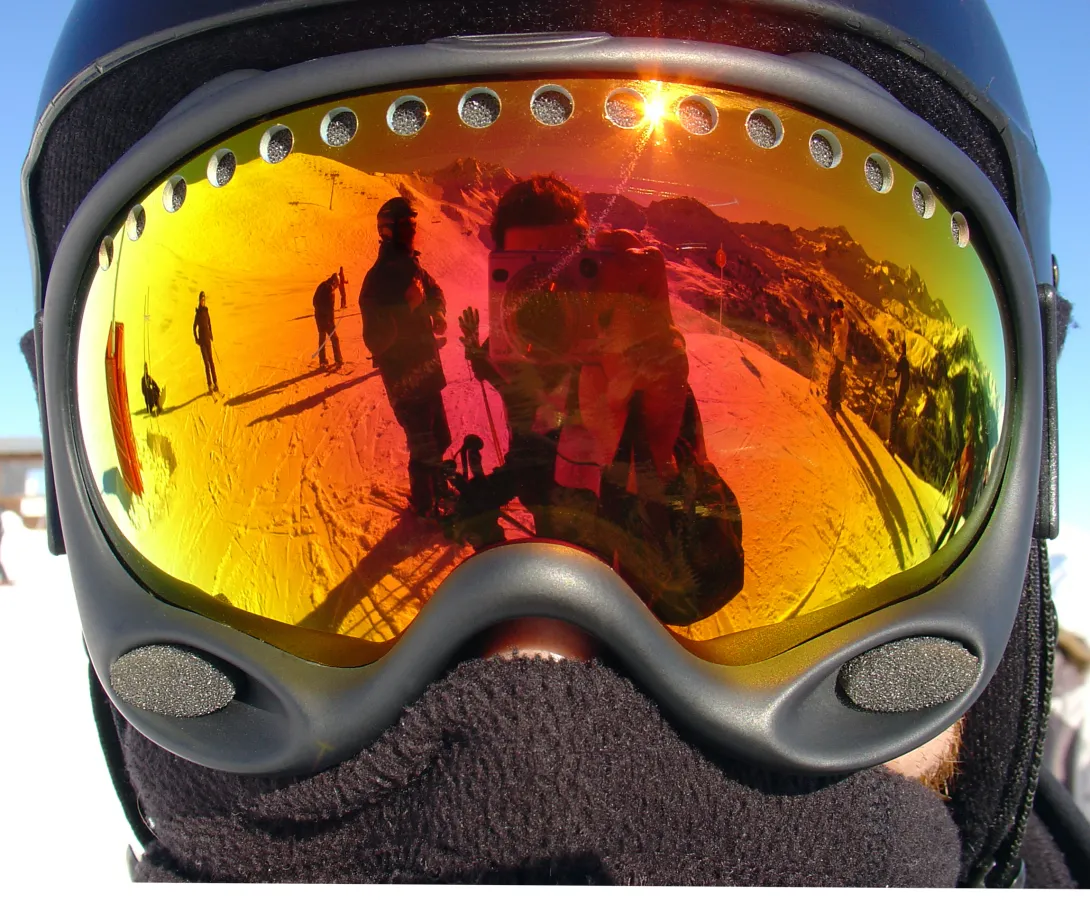
Photochromatic lenses are lenses that adjust their tint based on the light conditions. When it’s foggy or cloudy out the lenses will lighten to allow more light to come in and when it’s bright and sunny the lenses will darken to offer more protection.
The pro to photochromatic lenses is that they are a great all-in-one convenient lens for any condition. The con is that they are more expensive than other lenses, but they do eliminate the need to buy extra lenses.
Photochromatic lenses are a great option for skiers who want their lenses to be perfect for the present conditions but don’t want to go through the process of switching their lenses in and out or carrying extra lenses around with them.
Polarized Lenses
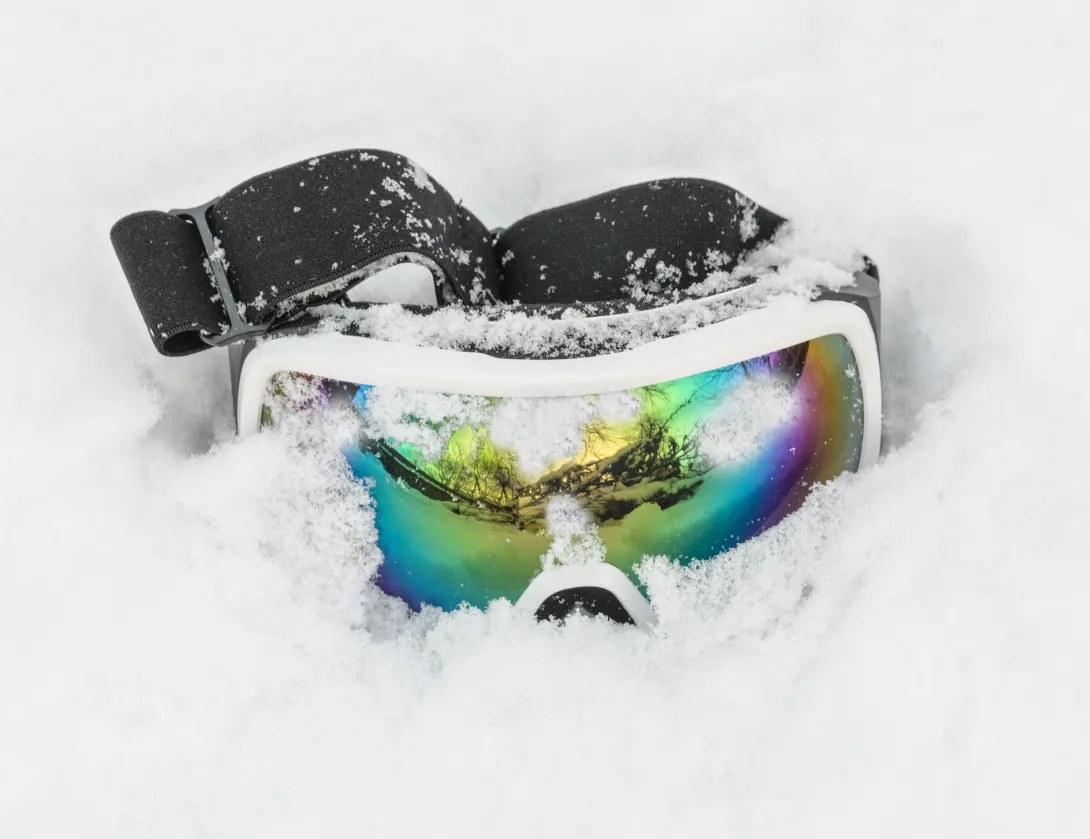
Some ski goggles come with polarized lenses, but I’d probably urge you to steer away from them. Polarized lenses reduce the glare of the sun reflecting off the snow, but they also reduce the glare on ice making it tough to spot ice patches.
If you have extremely sensitive eyes then you may find you prefer the polarization, but just be wary of them if you ski in an area that sees a lot of ice, such as the Northeast.
Contrast-Enhancing Lenses
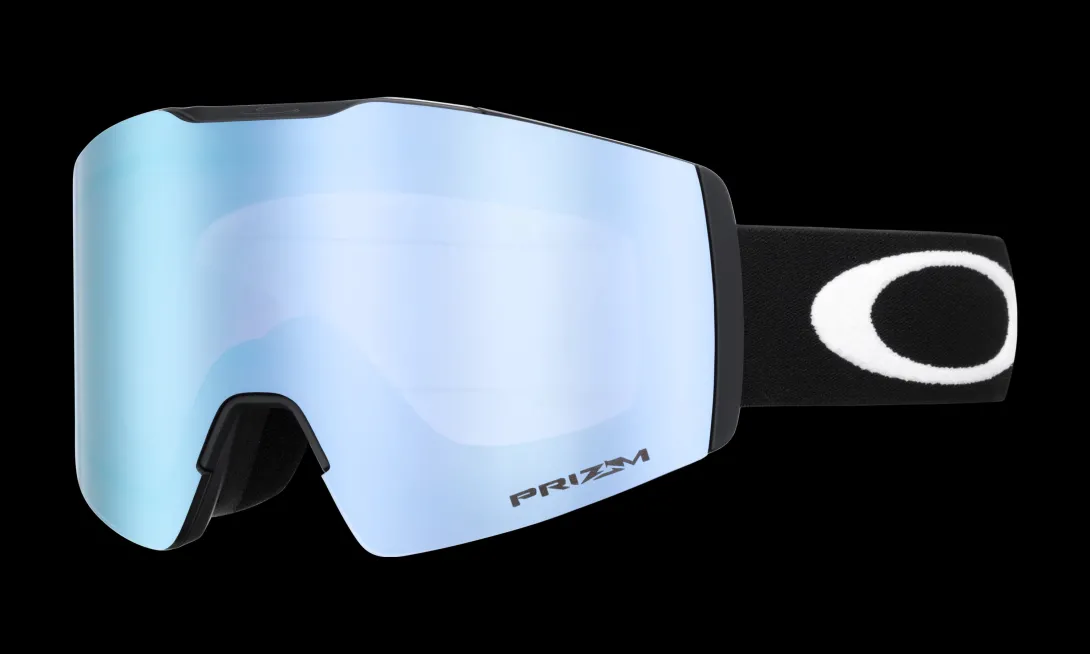
Many brands are making lenses that enhance contrast, such as Oakley’s PRIZM, Smith’s ChromaPop, and SPY’s Happy lenses. These make certain colors or shades stand out so you can pick out bumps or objects in the snow. They focus on the details and filter out the noise so you can see what you need to see and react quicker to changing environments.
Lens Colors
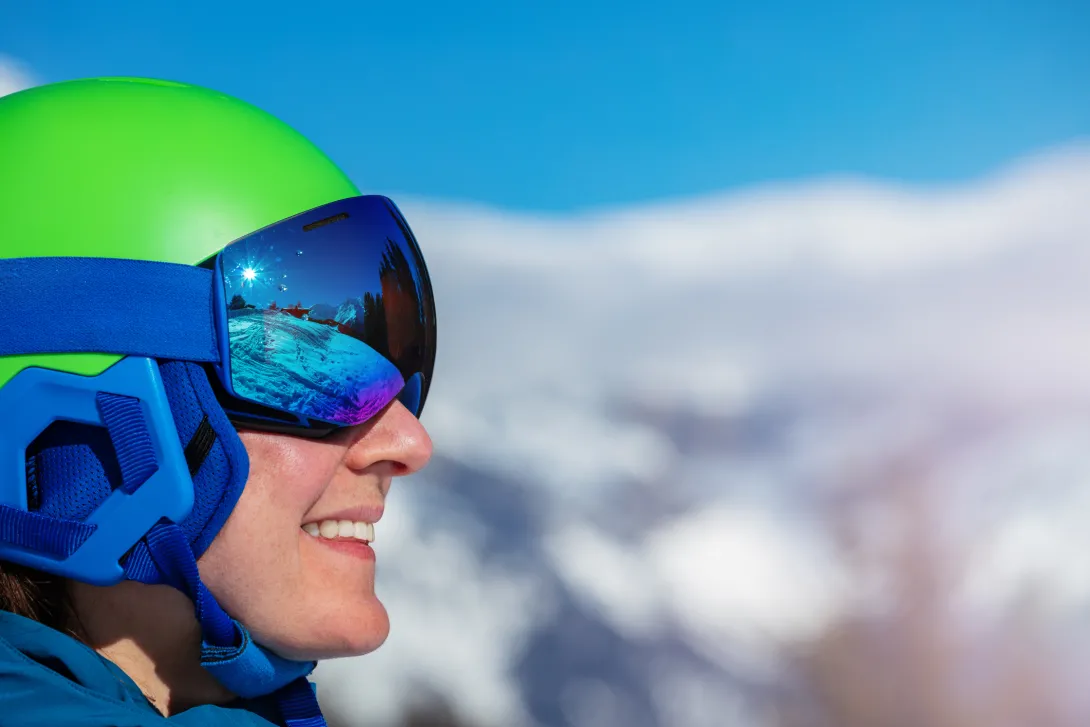
The color of your ski goggle lenses are about way more than just looks, they’re about performance.
The most important factor in choosing the color of your ski goggle lenses is not the color of your outfit, but rather the conditions you ski in versus the Visual Light Transmission, or VLT for short, of the goggle’s lenses.
What is Visible Light Transmission (VLT)?
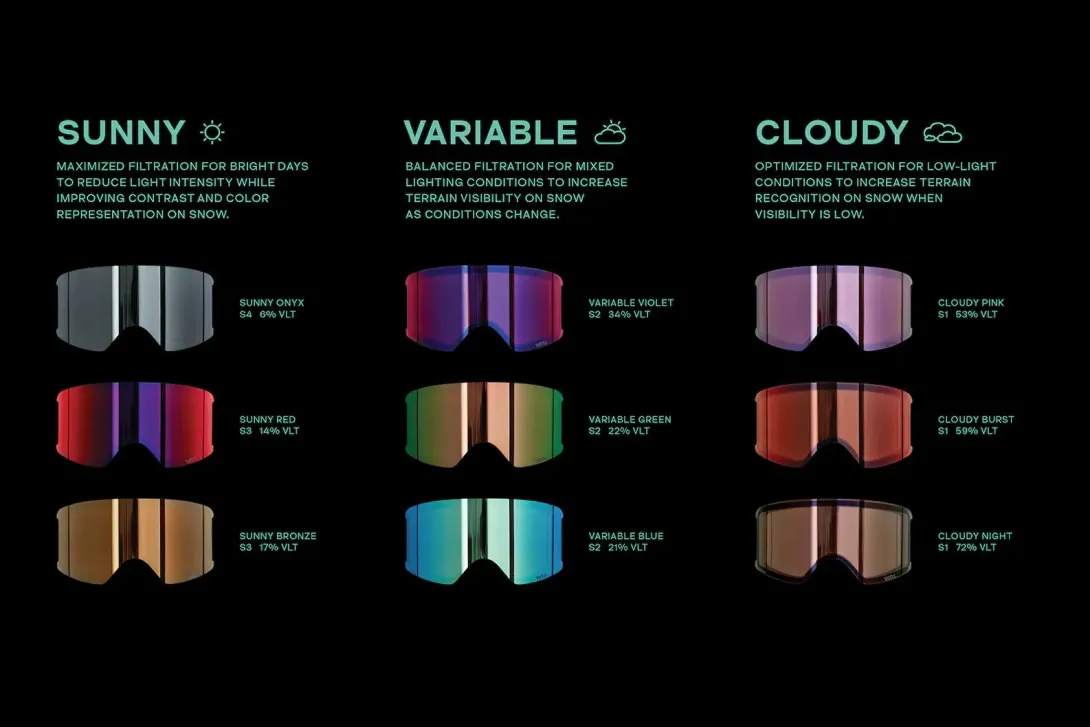
Visual Light Transmission is the percentage of light that is able to pass through the lens. It is expressed as a percentage. The lighter and more transparent a lens is the higher the percentage of light that is able to come through it will be. Subsequently a darker and more opaque lens will let in less light, having a lower VLT percentage.
You can’t tell a goggle lens’s VLT transmission just by looking at it, so be sure to ask about the percentage of light transmission when shopping to be sure you’re getting the best goggle lenses for you.
Best Ski Goggle Lenses For Overcast Conditions

If you’re skiing on a dark winter day, a cloudy overcast day in the spring, or at morning or night, you’ll want a ski goggle lens made for low-light or “flat” light conditions with a high rate of light transmission, between 60 and 90%.
The color of the lens will be an amber, yellow, or light pink tint. A mirrored coating is not necessary as you want as much light to be able to pass through the lens as possible.
Best Ski Goggle Lenses For Sunny Conditions
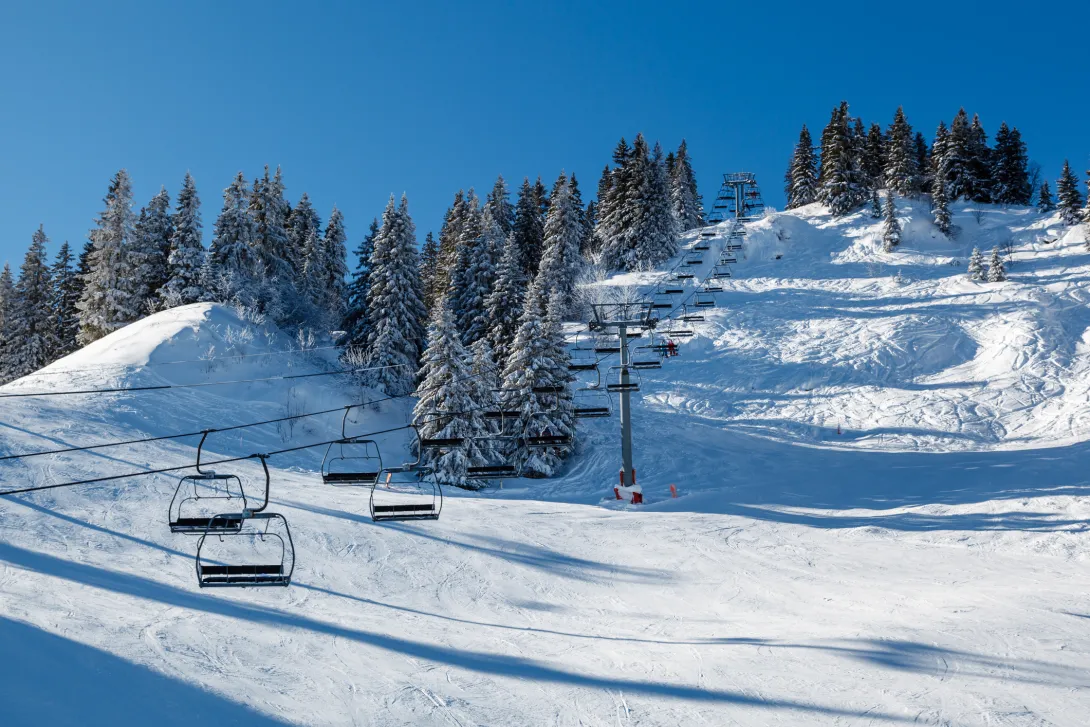
On sunny bluebird days, you’ll want to wear a darker ski goggle lens that is made for bright light conditions with a lower rate of light transmission, between 10 and 25%.
These lenses often come in darker colors such as black, gold, blue, or green and typically have a mirrored coating on the outside. You shouldn’t be able to see your eyes through them. These types of goggle lenses are able to filter out more light, making them ideal for sunny and bright conditions.
Best Ski Goggle Lenses For Various Conditions
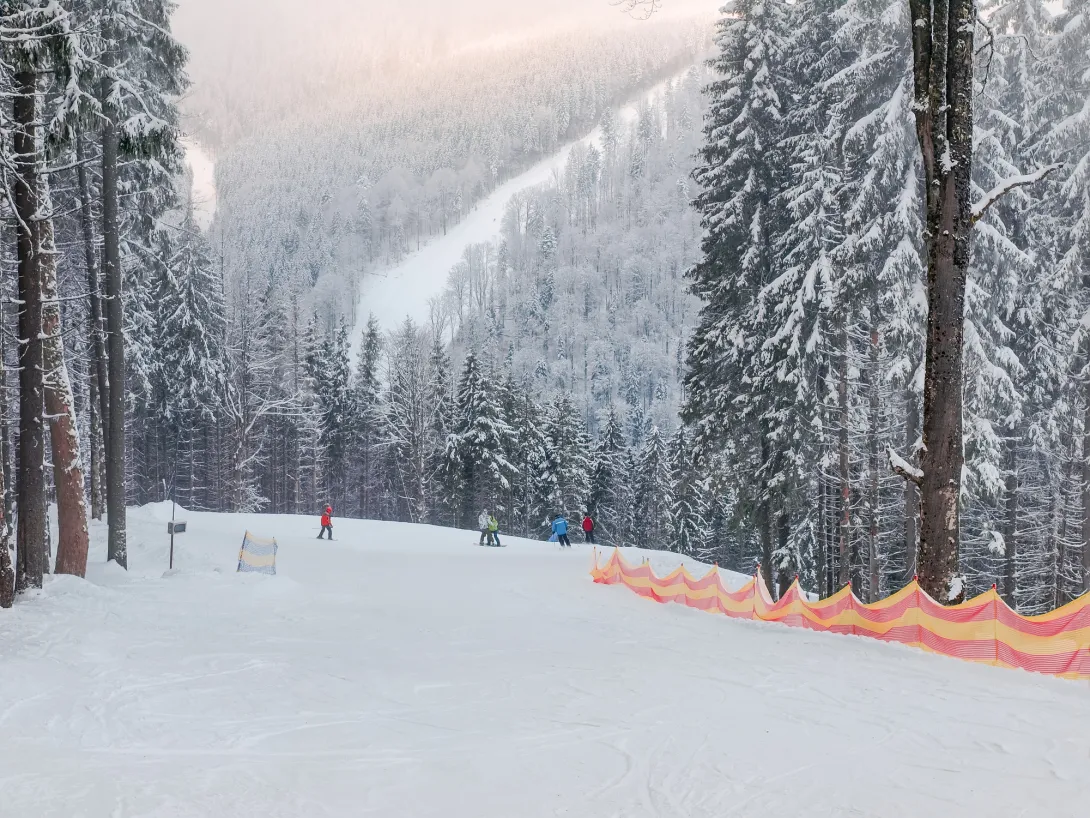
I know it’s a part of every skier or snowboarder’s dream to have an array of ski goggle lenses available at their disposal so they can always be wearing the most ideal lens for conditions, but that is certainly an expensive and not always very realistic dream. Especially when you’re just starting out and aren’t even sure if you like the sport of skiing yet, it’s best to just start with one lens that will work in a variety of conditions, or the one condition you ski most often in.
If you only ski on bluebird days, you could probably get away with owning just one dark lens. If you ski in a variety of conditions, you’ll want to purchase a lens that is more adaptable. Lenses that let in about 25-50% of light and come in a rose, amber, or even sapphire tint will be most suited for universal conditions.

